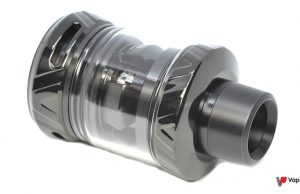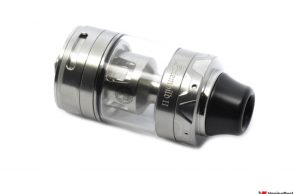Direct inhalation involves breathing the vapour directly into your lungs like breathing normally, instead of in two steps like smoking a cigarette. For direct inhalation you’ll need the right type of clearomizer, with a free enough air flow and a vape power of at least 20 or 25 W. Direct lung vaping is increasing in popularity, but as clearomizers come with so many different features, choosing one needs some research.
Constant improvement
Direct inhalation was “invented” after MTL, which was the only option available a few years ago. It meets a specific need for vapers who find that indirect inhalation just isn’t satisfying enough. Clearomizers nowadays deliver great flavours, dense vapour and a lot of pleasure at moderate to high vape powers.
- What is direct inhalation?
- A good way to stop smoking tobacco?
- A range of direct inhalation vapes
- Are the flavours as good as with MTL?
- The downsides of direct inhalation
Direct inhalation involves drawing vapour directly into your lungs, unlike MTL where you inhale in two steps. Most cigarette smokers smoke using indirect inhalation – first they draw the smoke into their mouth and then pull it from there into their lungs. Direct inhalation is more common among hookah users.
Neither method is any worse than the other when it comes to tobacco, and neither’s any better than the other with e-cigarettes. It really is a matter of personal preference, so whichever one stops you reaching for a cigarette is the right one for you.
People often say that the best way to switch to e-cigarettes is to use an indirect inhalation clearomizer, because it feels the closest to smoking a cigarette. While that may be true for most users, it doesn’t mean it will be the case for you. Even if it’s statistically true, you’re no statistic. You may even be one of the actually quite regular exceptions.
Whether you use MTL, or direct inhalation, has little to do with quitting or when you started vaping, but it’s not uncommon for users who start with indirect inhalation to switch to direct inhalation. Maybe you’ll want to change from one to the other. Be open to switching or growing into the other method if it helps you to keep enjoying vaping and finding satisfaction in it.
Direct inhalation usually uses vape powers of 20 to 200 W – that’s a very big range. At moderate powers, the air flow is open enough for direct inhalation, but is still restrictive. At higher powers, on the other hand, the air flow is almost completely free and there’s no resistance when you inhale. So the amount of vapour you make with the same e-liquid is proportional to the power you use.
There are so many different ways of vaping with this style that it’s essential you choose a clearomizer for the power level that suits you. Huge clouds can be a lot of fun, but they can also satisfy that huge, urgent craving for nicotine and sensation. There’s no reason not to have a 30 W clearomizer for every day, for example, and a 100 W one to make big clouds when you feel like it.
You’ve probably read that you get the best flavour at the lowest powers. Traditionally, only MTL is considered to deliver the best flavours, followed by mid-range clearomizers around 20-30W. Vapes that make huge clouds but deliver bland, vague flavours come in last place.
That may have been true a few years ago, but not anymore. Clearomizers have made incredible progress in recent years and can now deliver excellent flavour even at the highest powers. Mesh coils, i.e. coils made from metal mesh, are especially good at high power.
There are, however, certain downsides to direct inhalation compared to MTL that we can’t ignore. Since they use more power, the coils reduce battery life. You need to consider this when you choose a box. Opt for a box with a big battery or one with batteries you can replace.
Making more vapour also means you use more liquid. That’s something to think about for your vaping budget, so you might choose liquids sold in bigger packs, or even get into DIY. There are always ways of making vaping far cheaper than combustible cigarettes, so nobody can argue against vaping on the basis of cost.






